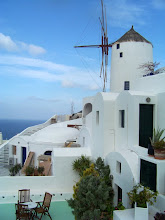
I love eye-opening and thought-provoking documentaries. However, the more such films I watch, the more pessimistic I got towards mankind as more and more inconvenient truth is revealed in front of me. Blue Gold is one of such documentaries I watched recently. Based on the book Blue Gold: The Fight to Stop the Corporate Theft of the World's Water, the film provides a critical examination of the global water privatization.
As stated in the film, water is today’s oil. Water crisis and privatization is simply beyond our imagination. Some shocking facts I learned include: the French water giants Suez, RWE and Vivendi buying water all over the world including many American cities such as Seattle, Chicago and Pittsburgh; the Cochabamba protests in 2000 against privatization of water in Bolivia (even collecting stormwater was against the law!); Bush family buying vast lands in Paraguay which sits atop one of the world's largest fresh-water aquifers…
The title of the film recalls another provocative documentary Black Gold which uncovers the extremely unfair trade in
The non-profit organization Solutions for a Better Planet has been organizing environmental films and lectures around the world, and Blue Gold is on their list. I’m excited to find out about their China Green Tour -
In June 2010, a month after the official opening of the Shanghai Expo, in eight universities across China we will screen documentaries on the main eco-issues of our current environmental crisis: water, waste, energy, climate change, urbanisation, food, deforestation, desertification..., and present positive examples of pragmatic solutions from all over the world.
I'll be back in








